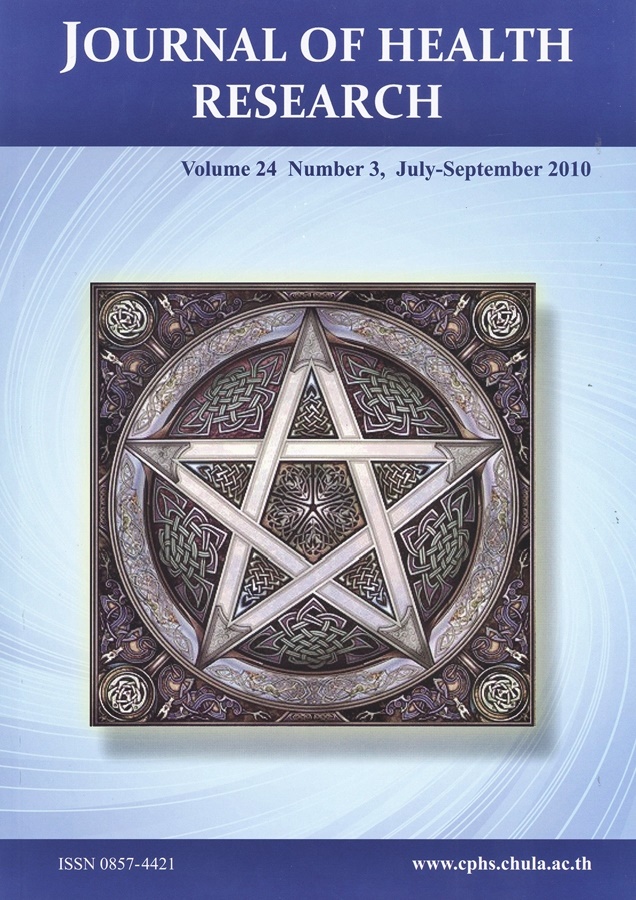Pathways to Smoking and Drinking: the Role of Family Functioning, Supportive Parenting, Self-Control, Risk and Protective Factors in Thai Adolescents
Keywords:
Smoking, Drinking, Family functioning, Supportive parenting, Self-control, Risk factorsAbstract
The purpose of this study was to test a model of how parenting, family functioning and self-control are related to risk and protective factors and their effects on smoking and drinking behavior among Thai adolescents. The model was tested with 676 Thai high school students collected through simple random sampling from grades 10-12 with the mean age of 16.7 years in Bangkok area. The developed model consisted of seven latent variables: family functioning, supportive parenting, good self-control, poor self-control, protective factors, risk factors, and smoking and drinking behavior. Data were collected by questionnaires with reliability ranged from .85 - .95. Findings from the analysis were best fitted to the empirical data. Structural equation model analysis indicated that supportive parenting was linked with smoking and drinking directly and indirectly through risk factors and good self-control, while family functioning was linked with smoking and drinking indirectly through good self-control and poor self-control. All independent variables in the model explained 82.3 percent of the smoking and drinking in Thai high school students.






